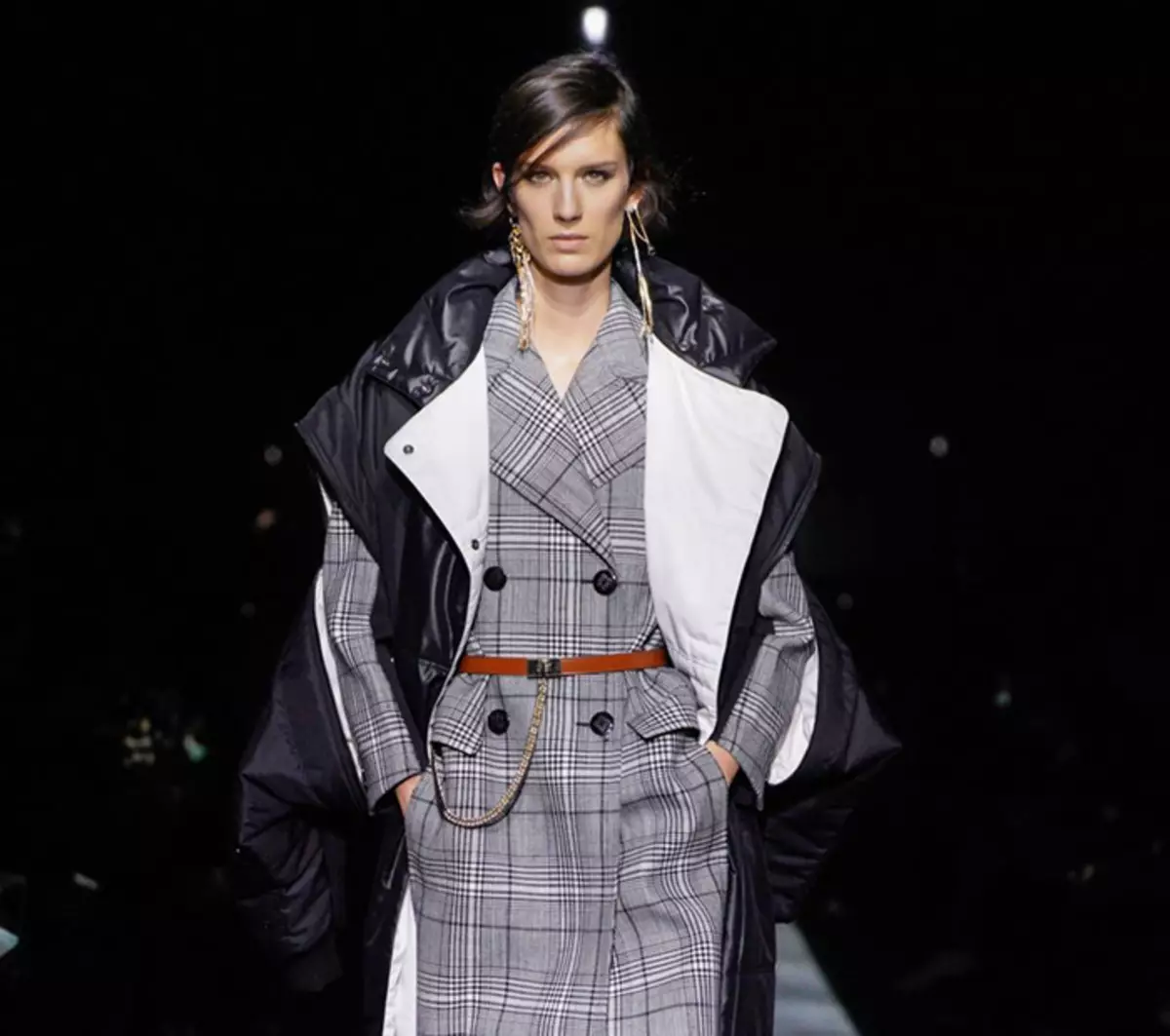The famous ancestor, fans among the aristocrats and revolutionaries, the brilliant present - this is our hero, mysterious vest. To whom and when it took to create clothes without sleeves and how this clothing has laid the way to the top of success - in our fashionable investigation.
Vest is a strange thing: it is not very clear why it was cut off the sleeves from a warm, functional jacket, so that something appeared. Nevertheless, this thing did not just stand in one row with the most important clothes of his time, such as Camisole, but also crowded him with fashionable Olympus. So, Camisole we can now observe except that in costume balls or in the museums of clothing history, and the vest in all sorts of variations is flashing here, then there. What did it start?

Denim, fur, from wool - Now vests make almost any material
Photo: unsplash.com.
Cut from shoulder
We are already accustomed to starting the story of things from the times of distant, almost forgotten. Mountains become Egypt, Greece, other ancient civilizations. Everything is different with the vest: researchers put either to France or Turkey. But with the time of appearance, everything is more or less clear: it is about the eighteenth century. It was then that the European scene appeared a strange camisole without sleeves. It is exactly exactly that the fashion was distributed to the novelty ... French street jesters and circuschi, who were called hills.
Another version of the origin of the name is associated with the mythical tailor from Paris, loved to cut and experiment, whose name is, of course, dwell. What is important, the word Gilet itself has Portuguese roots - from the name of the Jaleco coat. The most realistic and recognized is the "Turkish" version. In the Ottoman Empire, any sleeveless clothes are called "Eck", which is consonant with the "Vest's usual". Moreover: in Tatar language there is a verb "Zhylyt", meaning calling: "Sogray!" By the way, the vest served exactly this feature: heat, insulate its owner. Superval popularity has been particularly popular with military and street vendors. Why? Everything is simple: it was important for army ranks to preserve the heat of the body, while not throwing the movements of the hands. The additional layer would interfere with the clever passes of the shoulders and the forearm, but due to the lack of spells, the warriors could wait for the yatgans without obstacles. For the same reason, loved versions and street vendors were loved. By the way, some of the historians of fashion assure that the ancestor of the vest was the Roman breastplate Lorika - leather military armor, protecting the chest, belly, sides and shoulders. So how are the linked romantic version about French gila, a much more reasonable story about the Turkish Eck and the Roman version? Most likely, the vest came to Europe from Asia (and the Arabs took the idea, of course, at the Romans), and there it was transformed to taste French workers and the peasant class. Yes, yes, you did not hear! Usually some novelty first takes away from nobility and then adapts and "descends" into the people. Here, everything happened on the contrary: the arrowless sleeveless on the lacers fell on the shower of Nizam, and then then rose upstairs.

Men vest also fell to taste
Photo: unsplash.com.
From dirt to Kings
So, our hero was in favor of the aristocracy closer towards the end of the eighteenth century. Despite the French (or Turkish?) Origin, the thing especially loved by English dandy. And now she more resembled exactly that Camzole is a long-grade fit jacket, except that without sleeves. Fabrics for creating vests were used complex, heavy - velvet or atlas; Such things often decorated with handmade embroidery and precious stones. The once inconspicuous and functional chief who served for insulation would not know himself. Of course, the aristocratic vest seized not at all in order to warm his owner, but show his status.
The French novelty came in an amazing way to Russia (!) After his triumph in Paris. Wines everything ... politics. Sleeveless clothes in Europe worn not only workers, peasants and know, but also revolutionary citizens responsible for the accomplishment of the Great French Revolution. For some time, the Russian Empire was believed that if a person dares to wear a vest, then it certainly has to relate to radical organizations. Paul I forbade experimenting with my appearance, indicating that "the vests made the French revolution."
But gradually from Nedocamol and dubious, even forbidden details of the wardrobe, passing through wild colors, ridiculous prints, being on secondary roles, the vest becomes the main fashionable thing of the nineteenth century. Contributed to this, completely suddenly, the development of the hourly industry. Laconic, dark vests with elegant cutouts and elongated lapels were perfectly combined with watchs on chains. The dial was placed in one crawl pocket, the chain was attached to the second. Naturally, in addition to the convenience of wearing, this method also assumed some share of boasting: the rich was chosen kits made of precious metals, those who easily walked to the trick and put the heads of gold or silver links, hiding with no remarkable dial in a lingerie pocket. By the way, it was at that time an elegant sleeve-suite became an element of a classic male triple. And so far the vest on the figure remains a mandatory detail when creating images according to the Black Tie and White Tie dress. So finding a male bow without our hero under the tuxedo or a jacket is almost unrealistic.

Elongated, almost in the floor, dressed, with patch pockets, sports and elegant - perhaps today it is the most universal detail of the wardrobe
The first noble brands, who began to wear a vest on their own, without top jacket, were women. First of all, the ladies reworked it under themselves and created corsets that can be put on the exit, and not only under the bottom clothes. Oh, it was a nice time! Luxurious flower embroidery, gentle silk braid, traditional lacing instead of long-habitual buttons. The debut models of female vests were similar to Bolero, and the first desperate fashionmented, who adapted the male element of the wardrobe to the female image was just Spanish.
Russian noble ladies also did not pass by a new fashion. Inspiration they drew from rural romance. Traditional peasant degrees and Epanechka - the most that there are vests. The first model was similar to a short swing top on the straps, which put on over the shirt and decorate the whole image. Epanechka (or Japanese) is a kind of warmed vest, a fur pressurope without sleeves. The variety of epanchitsa was put on a sundress in front, decorating embroidery and stones.
Closer to the twentieth century it became clear that, despite all the attempts of the aristocracy to assign a vest to themselves, this thing remains an invalid folk. So, many nationalities in their traditional costume have their own version of the sleeveless stuff.
People's Spirit
But really the modernity of the vest - only in national costumes? Of course not! As once a sleeveless shell was worn by Roman legionnaires, and the warm heck - Turkish Yanychars, from the middle of the twentieth century, the vest becomes part of the form of police and military worldwide. The reasons are all the same that many centuries ago: simplicity, reliability, free movements with hands. Moreover, today we know about a special model - a body armor, which saves not one life every day. The same function - salvation - performs the inflatable vest, in which the desperate raftters are melted along the stormy rivers. It is difficult not to mention the well-known intellectual Anatoly Wasserman, who glorified a simple fishing vest with many pockets and pockets. According to Anatoly, in them - only the most needed and valuable. After experimental weighing, it turned out that Vasserman was valuable - nine and a half kilograms.
What are the podiums? The trendy world also did not forget about the controversial skinless (by the way, this knitted thing is considered synonymous with the vest). Fur, elongated, almost in the floor, with overhead pockets, out of wool, costume and blow, sports and elegant - perhaps today is the most universal detail of the wardrobe, which is represented in each of the style directions. Want to feel like a luxurious lady or gambling? In two these images there will be nothing in common, except our today's hero. And what vest can express your mood? Choose!
